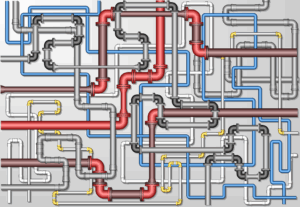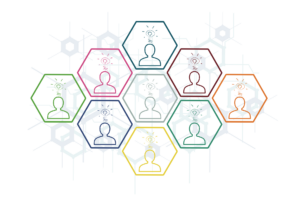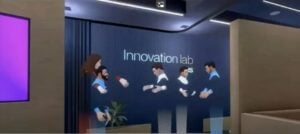Talent management is transforming. Despite an organizational evolution that breaks down functional silos, most companies are still fairly traditional with their hiring practices defined by a hierarchical talent operating system. On the other hand, some companies do feature cross-functional project teams that encourage innovation and collaboration. Other systems may have an option for employees to opt-in to rewarding, innovation focused work.
From Boredom to Burnout
The approach to innovation talent has evolved in this new globalized work world. While common themes have emerged, different organizations have chosen distinct paths. In this recent Innovation Talent Roundtable, the innovation community shared several thoughts on the search for innovation talent and fostering a culture of innovation.
Igniting innovation culture and talent is fraught with danger as, if you’re not careful, it can lead to burnout. Finding innovation talent that fits within a given organization is, to put it simply, challenging. Good innovation talent itself is elusive. Add to the equation that a given person not only needs to have the specific skill set being sought, but that same person must fit with corporate and innovation culture already established.
Once that talent is identified and makes it through sourcing and onboarding, nurturing must occur. That nurture program must be customized and personalized to the talent and consider from where the talent arrived– either internally or externally. And once the team has accepted that new talent, management must provide a perfect balance so as not to achieve either end of the innovation talent spectrum: burnout or boredom.
The Inside Gig
In an article in Forbes, “A New Approach to Talent Management,” Edie Goldberg, president of E.L. Goldberg & Associates, describes another “inside gig” talent operating model that fosters agility, grows capabilities without costly hiring cycles and reveals inner talents. She notes, “Like the innovation-focused model, this type of internal talent mobility allocates a certain amount of an employee’s time to work that is outside of their job description. But rather than designating a percentage of their time for blue-sky projects, HR leaders can steer employees toward projects that are mission-critical for the company. Also, the time employees work on these outside projects is not added to their regular work schedules but integrated into them.”
This inside gig type of work project can promote new functions for the employee, taps into their capabilities, helps them learn new skills and avoids extra hiring of new workers. And when employees come together cross-functionally, often innovation will ensue. This also encourages a shared resource approach among managers as they distribute their talent to different projects depending on their skills. And, of course, this could cultivate a culture of innovation from within.
“This new world of work, in which we create opportunities to facilitate internal talent mobility, also benefits the entire organization,” says Goldberg. “It improves organizational productivity, employee engagement and creativity. Taken together, these improvements enable a more agile workplace. HR leaders should bring the totality of their existing resources to bear on the projects that will help execute the business strategy.”
Create An Open Environment
So how can one manage innovation talent all the while fostering a culture of innovation excellence? We asked ChatGPT, and the artificial intelligence platform gave a few specific pointers. The answers highlight that creating an open environment is key, where participants are encouraged to collaborate and mentor. Diversity should not be overlooked as well when it comes to recruiting innovation talent.
- Create an innovative culture: Encourage and reward creative thinking, and provide employees with the opportunity to explore new ideas.
- Develop a formalized innovation process: Establish a framework for brainstorming, testing, and implementing new ideas that encourages collaboration across teams.
- Invest in training and development: Provide resources to help employees hone their skills in areas such as design thinking or product management so they can contribute more effectively to the innovation process.
- Foster mentorship programs: Connect experienced innovators with less-experienced ones to create an open learning environment where everyone can benefit from each other’s knowledge and experience.
- Prioritize diversity of thought: Ensure that your team is composed of individuals who bring different perspectives to the table, which will lead to more innovative solutions being proposed and implemented successfully.
A Learning Experience
Talent strategies for both large and small companies can be a challenging, yet learning, experience. Now more than ever, strategic planning is warranted. A respectful and open environment, which is diverse and inclusive, is an important aspect of creating value in the talent and hiring process. Empowering the team to communicate and course correct when needed further encourages a cycle of improvement.
“A culture that is focused on learning embraces experimentation, iteration and continuous improvement,” says Anne Rush, author of “Create a Winning Talent Strategy to Drive Innovation,” in Entrepreneur. Companies that encourage a culture of learning and education also tend to engage with the open source community more often as well, driving possible partnerships and open innovation development. To have a truly collaborative culture, you also need to ensure that managers at all levels are on board, says Rush.
Video courtesy of Stern Strategy Group
Contributor
-

Matthew Kramer is the Digital Editor for All Things Insights & All Things Innovation. He has over 20 years of experience working in publishing and media companies, on a variety of business-to-business publications, websites and trade shows.
View all posts





























































































































































































